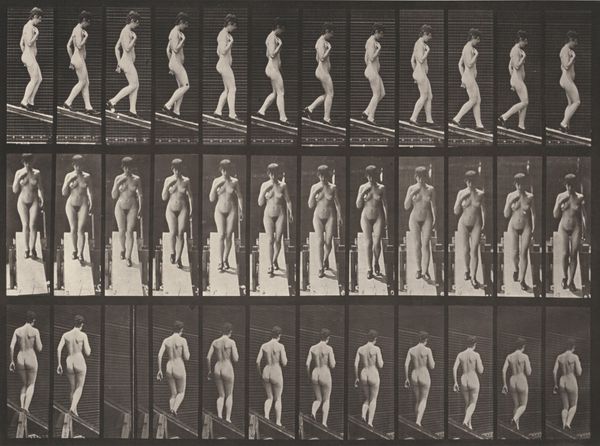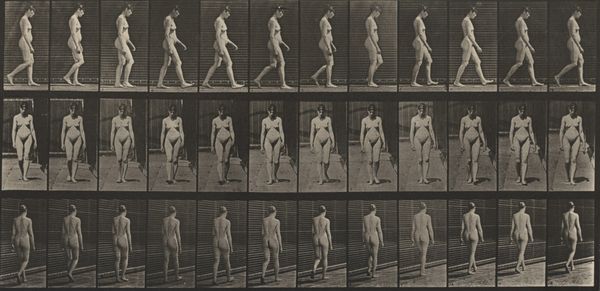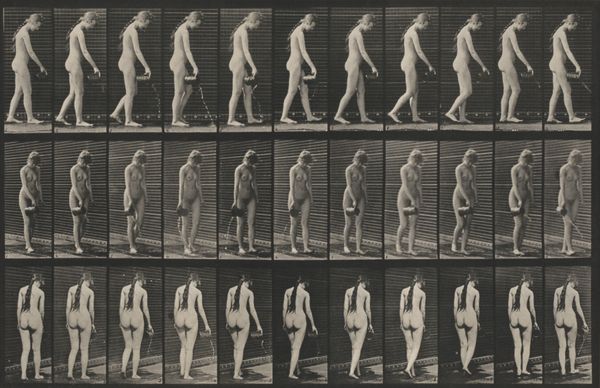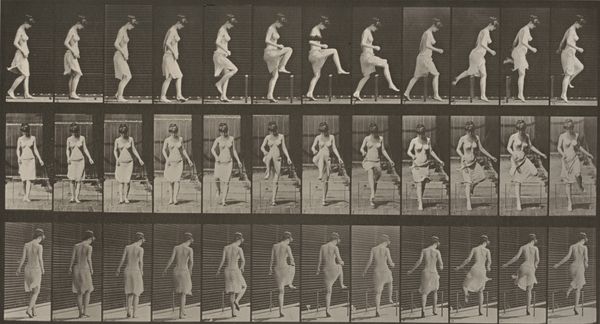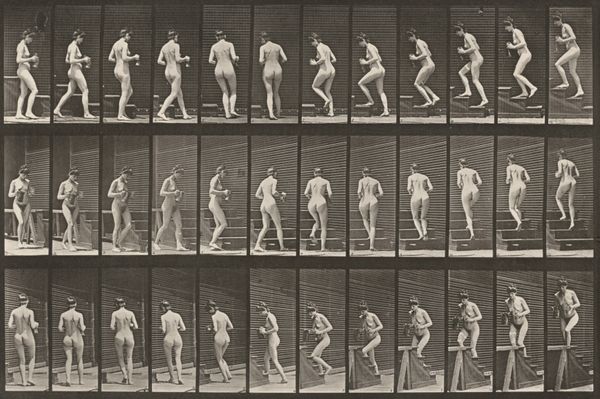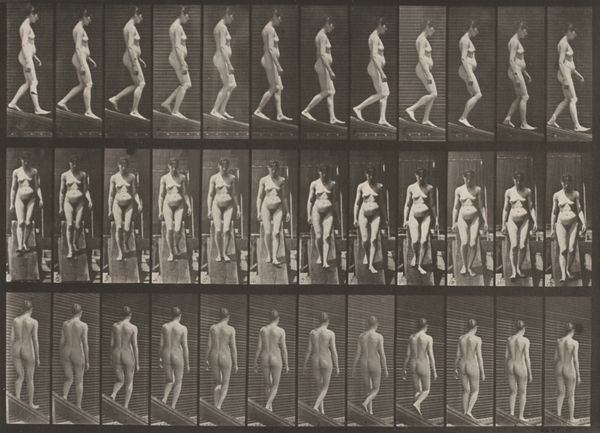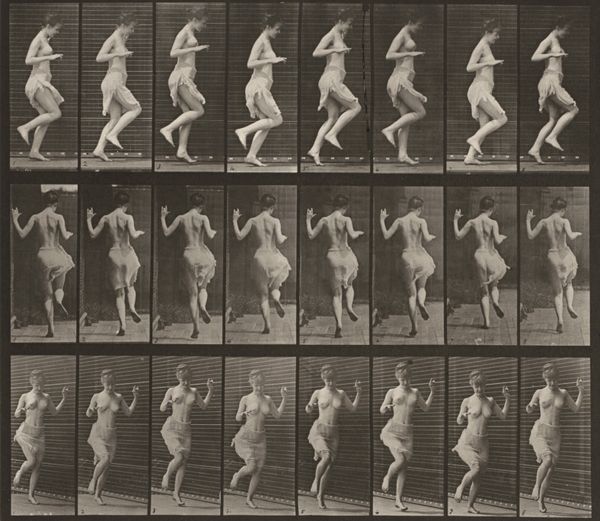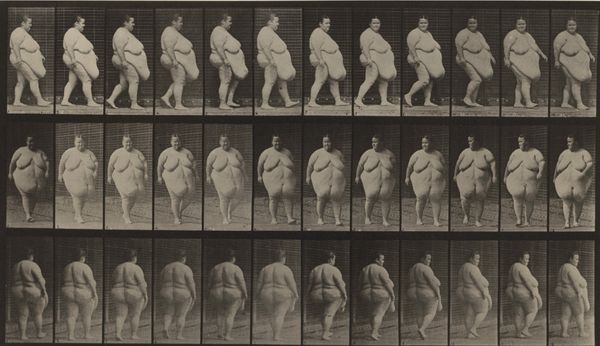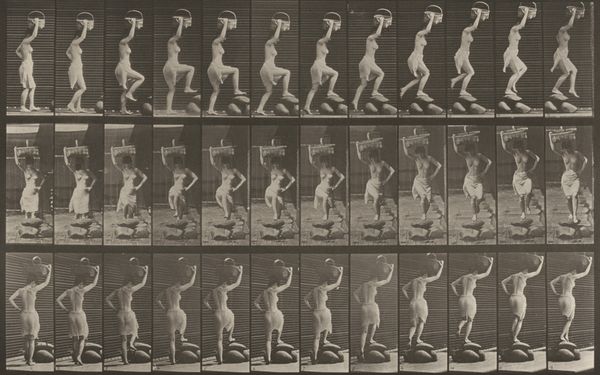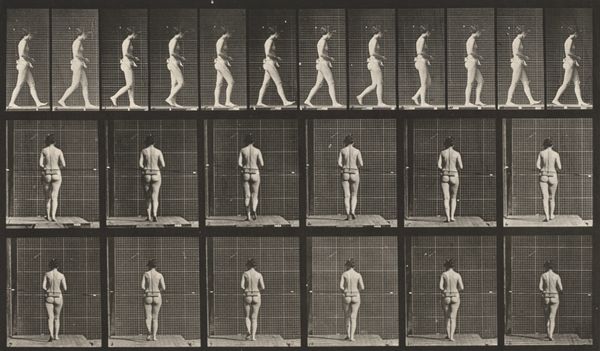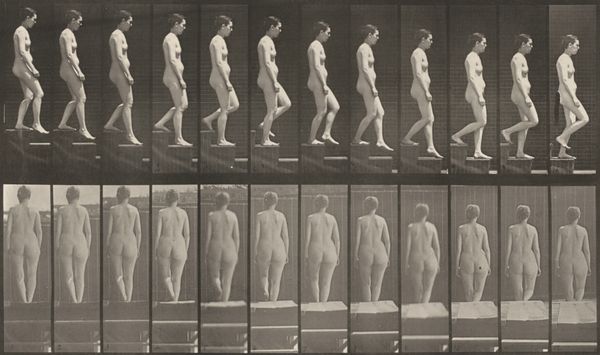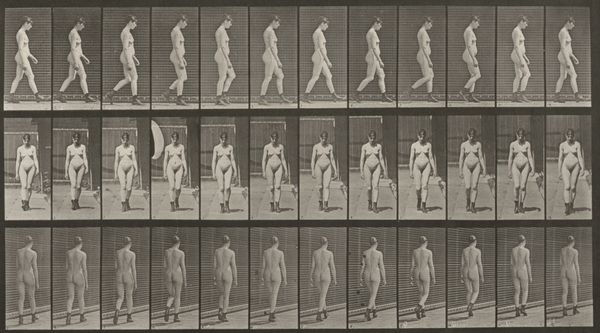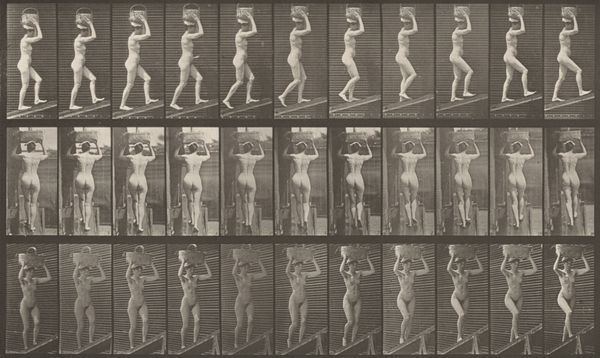
Plate Number 26. Walking, carrying a 75-lb. stone on left shoulder 1887
0:00
0:00
print, photography, gelatin-silver-print
# print
#
photography
#
gelatin-silver-print
#
nude
#
modernism
Dimensions: image: 23.8 × 31.2 cm (9 3/8 × 12 5/16 in.) sheet: 47.8 × 60.3 cm (18 13/16 × 23 3/4 in.)
Copyright: National Gallery of Art: CC0 1.0
Curator: Eadweard Muybridge's "Plate Number 26. Walking, carrying a 75-lb. stone on left shoulder" from 1887 immediately strikes me as a rather stark, methodical study of human motion. Editor: Methodical is right! There's a bleakness, almost industrial, about this early example of stop-motion photography. The subject's burdened figure trudges along, a Sisyphean exercise laid bare by Muybridge's grid. You feel the weight. Curator: The gelatin-silver print medium contributes significantly. It enables the crisp delineation of each frame, highlighting the mechanics of movement. But let's consider the socio-historical implications: these photographic series emerged within the context of scientific inquiry, aimed at understanding and documenting human and animal locomotion. Muybridge's work played a crucial role in shaping perceptions of the body. Editor: And this wasn't just about objective observation, was it? The institutional framing here is vital. Muybridge was working in the service of scientific establishments and wealthy patrons who were obsessed with rationalizing the world through quantification and cataloging, all deeply entrenched with 19th century European power dynamics. Curator: Precisely. This is photography as a tool of empiricism and power, the artistic component often overlooked. The staged setting, with the grid behind, underscores this calculated approach, doesn't it? Editor: Indeed, it minimizes artistic expressiveness, seemingly foregrounding scientific precision. However, consider the performative aspect inherent to these motion studies. The laborer is staged, a model engaged in work. It complicates simple notions of objectivity. Moreover, the very act of capturing these movements—breaking them down, making the invisible visible—altered our perception of time, labor, and human capabilities. Curator: I concede. The materiality and making of this image speak volumes about production—both artistic and industrial. And even that studio backdrop, with its marked measurements, tells us volumes about Muybridge’s attempts to turn human motion into something that can be measured, categorized, understood, and perhaps even controlled. Editor: Thinking about how photography changed expectations, maybe even labor relations, I really feel that. We are indebted to photography as more than just a technological device, but as a tool to further challenge and inspect human expectation. Curator: A fitting perspective, emphasizing the ongoing role of photography and its contribution to science and art! Editor: Right! A very productive lens through which we’re able to examine ourselves and those around us.
Comments
No comments
Be the first to comment and join the conversation on the ultimate creative platform.
